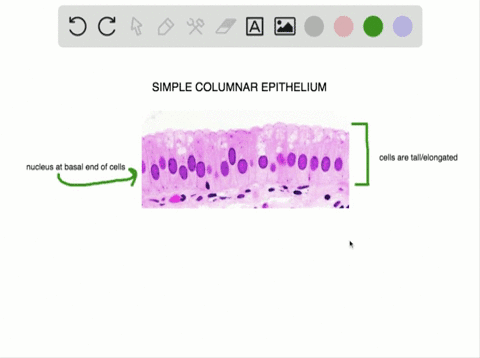Understanding the Membranes Lining Body Cavities Exposed to the External Environment

Introduction: The Significance of Body Cavity Linings
The human body is divided into various body cavities , each housing essential organs and serving specific physiological functions. Among these, certain cavities are uniquely exposed to the external environment, presenting both vulnerabilities and opportunities for defense. Understanding which membranes line these cavities-and their role in maintaining health-is critical for healthcare professionals, students, and anyone interested in human anatomy. This article explores the membranes lining body cavities exposed to the external environment, emphasizing their structure, function, clinical relevance, and ways to access expert care and information.
Body Cavities Exposed to the External Environment
Body cavities that communicate directly with the outside world include the digestive tract (such as the mouth, esophagus, and anus), respiratory tract (nasal passages, pharynx, larynx, trachea, bronchi), excretory tract (urinary tract openings), and reproductive tract (vaginal canal in females, urethra in males and females). These cavities are not sealed-they have openings that allow interaction with the environment, making them susceptible to pathogens, dehydration, and environmental changes. [5] [3] [4]
Mucous Membranes: The Primary Line of Defense
Mucous membranes , also known as mucosae, are specialized epithelial membranes that line the body cavities and passageways open to the external environment . These membranes consist of:
- An epithelial layer that serves as a barrier
- Mucus-producing exocrine glands that keep the surface moist and trap pathogens
- A supportive layer of connective tissue (lamina propria)
Mucous membranes are found in the following areas:
- Digestive tract : Oral cavity, esophagus, stomach, intestines, and anal canal
- Respiratory tract : Nasal passages, trachea, bronchi
- Excretory tract : Urethra, bladder openings
- Reproductive tract : Vagina, cervix, penile urethra
The presence of mucus is vital: it lubricates, provides a barrier against pathogens, and enables the movement of materials. The lamina propria delivers nutrients and immune cells to the epithelial layer. [1] [5]
Clinical Importance and Real-World Examples
Understanding mucous membranes has direct clinical significance. For example:

Source: youtube.com
- Gastrointestinal disorders : Conditions such as ulcers and Crohn’s disease involve damage or inflammation of the mucous membranes lining the digestive tract.
- Respiratory infections : Viruses and bacteria often enter via the mucosae of the respiratory tract, making these membranes critical barriers in preventing illness.
- Sexually transmitted infections : Many pathogens target the mucous membranes of the reproductive tract.
- Urinary tract infections : The mucosae lining urinary passages are the first line of defense against invading microbes.
In each case, the integrity and health of mucous membranes are fundamental to preventing disease and maintaining wellness. Healthcare professionals frequently assess the state of these membranes during routine exams and diagnostic procedures. [3] [4]
How to Access Expertise on Mucous Membranes and Body Cavities
If you need guidance or care for conditions related to the mucous membranes or body cavities exposed to the external environment, consider these steps:
- Contact your primary care physician for a comprehensive evaluation of symptoms involving the digestive, respiratory, reproductive, or urinary tracts.
- Seek a specialist (such as a gastroenterologist, pulmonologist, urologist, or gynecologist) for advanced assessment and treatment.
- To locate qualified medical professionals, use hospital directories, accredited medical association websites, or insurance provider portals.
- If you require educational resources, official medical school sites and trusted health science organizations are recommended. For example, you may visit reputable platforms such as MedlinePlus or the National Institutes of Health for detailed information about body cavity membranes and related diseases.
- For self-education, search using terms like “mucous membrane disorders,” “body cavity anatomy,” and “prevention of infections in exposed body cavities” on verified medical sources.
Note: Always consult a licensed healthcare provider for diagnosis and treatment. For up-to-date, authoritative information, use only well-established health agency sites, and avoid relying on unverified online content.
Challenges in Protecting Exposed Body Cavities
Body cavities open to the external environment face unique challenges, including:

Source: primevideo.com
- Exposure to pathogens : Constant contact with air, food, water, and other substances increases infection risk.
- Physical trauma : Oral and nasal mucosae are vulnerable to injury from foreign objects and abrasive materials.
- Environmental changes : Dryness, pollution, and allergens can damage or irritate these membranes.
To mitigate these risks:
- Practice good hygiene (frequent handwashing, safe food handling, protective gear when necessary)
- Maintain hydration and avoid irritants
- Use preventive healthcare services such as vaccinations, regular checkups, and screenings
Alternative Approaches and Innovations
Advances in medical science are offering new ways to protect and restore mucous membranes. These include:
- Barrier-enhancing medications : Topical agents and oral drugs designed to reinforce mucosal defenses
- Immunotherapy : Boosting immune response to pathogens entering through exposed cavities
- Minimally invasive diagnostics : Imaging and endoscopy allow for early detection of mucosal disease
- Regenerative medicine : Stem cell therapies and tissue engineering aimed at restoring damaged mucosae
Discuss these options with your medical provider or research them on accredited medical research databases.
Key Takeaways and Practical Applications
In summary, mucous membranes line the body cavities exposed to the external environment . Their role in protection, moisture retention, and pathogen defense is critical. To maintain mucosal health:
- Stay informed about risk factors and preventive strategies
- Access care through licensed professionals and official health agencies
- Research credible sources for updates on medical advances related to mucosal health
References
- [1] San Diego Miramar College (2024). Anatomy Lecture Notes: Tissue Membranes in the Body.
- [2] Number Analytics (2025). Ultimate Guide to Body Cavities in Human Anatomy.
- [3] eCampusOntario (2020). Body Cavities and Serous Membranes.
- [4] Louis Pressbooks (2022). Body Cavities, Serous Membranes, and Tissue Membranes.
- [5] NCBI Bookshelf (2024). Medical Language Related to the Whole Body.






